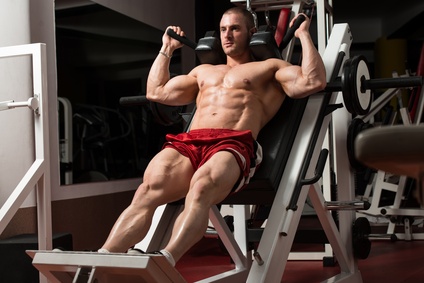Why is leg training so important?
Those who cover their bodies with the usual clothing that are not too tight still have an effect on their stature: a wide cross has an enormous effect on men. Many want this broad cross, neat upper arms and a six-pack stomach and focus on training here
The leg muscles
Well-trained leg muscles will stabilize the knees. If you have knee problems but exercised your legs gently, you can probably experience some relief from knee problems at this point. In particular, the knees must not be subjected to significant or even no load during training. While the thighs can be thought of as muscle mass, the calves would be more like working muscles. Even vigorous exercise will tighten it rather than inflate it. Nevertheless, the calves should be trained regularly and the best training effects can be achieved with heavy exercises that will quickly bring you to the limit. The thighs, on the other hand, can be inflated into real packages, which will have a corresponding effect. Only the muscle mass and then the proportions work!
Incorrect leg training can be harmful
Just like with other muscle groups, it is not just the intensity of the exercises and the appropriate types of exercise that matter, the execution of which is decisive. At best, an exercise that is done incorrectly will cause little to no muscle growth. In the bad case, however, these regress or you lose performance for the follow-up training, sometimes for several days. In the worst case scenario, sports injuries arise
Even the simple squat can do more harm than good if done incorrectly. This exercise is effective, but proper execution should not only be learned under instruction, but also maintained. Leg presses or leg extension on machines and hamstrings would be less risky but also less effective. The amateur bodybuilder does not need a round-the-clock personal trainer, of course, but he should turn to really competent staff or experienced bodybuilders in the gym in order to properly learn exercises or the use of training equipment. There is not much that can be copied because it cannot be seen, e.g. when a specific muscle group is tensed for an exercise or an extremity has to be rotated minimally in one direction. But that is exactly what makes the difference in the result but not in the training effort
Warm up before training your legs
The risk of injury
Leg training with intense exercises
It has already been explained that difficult and demanding exercises, with which you can quickly reach the “pain threshold”, make sense for calf training. For the thighs, the load during training should be selected so that this performance or pain limit is set at the end of the sets and / or training. If you use a lot of force in a short time, you will achieve better results. When building muscle, it's not about a lot of exercise, but about really going to the limit within the training unit. Too much exercise or too short periods of rest lead to overtraining and are pure poison for muscle building. It goes without saying that the right diet is also important, as it is what enables intensive muscle growth or significant fat burning.
Leg Exercise to Burn Fat
When it comes to burning fat, however, it is so-called cardio training that burns the most calories. The trick lies in the point of operating it to the point where the muscles are not noticeably broken down by overtraining. Those who have not yet built up muscle can of course train a little more intensively. Fat is broken down when there is a shortage of carbohydrates and fats in the body, while muscles are built up when there is an excess of carbohydrates. That is why the definition phase takes place before competitions
By the way, the secret of cardio training isn't just about training for at least an hour at a time. In addition, a certain heart rate must be achieved and maintained with which optimal fat burning can be achieved. The optimal heart rate decreases with increasing age and other factors influence but at around 140 most of them are correct. The form of calculation

